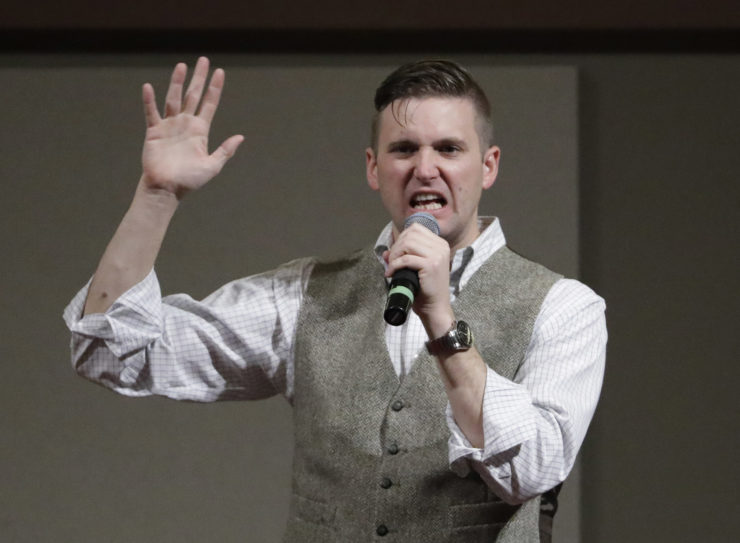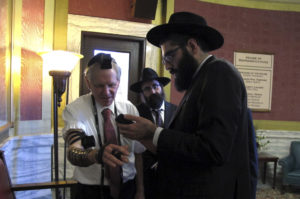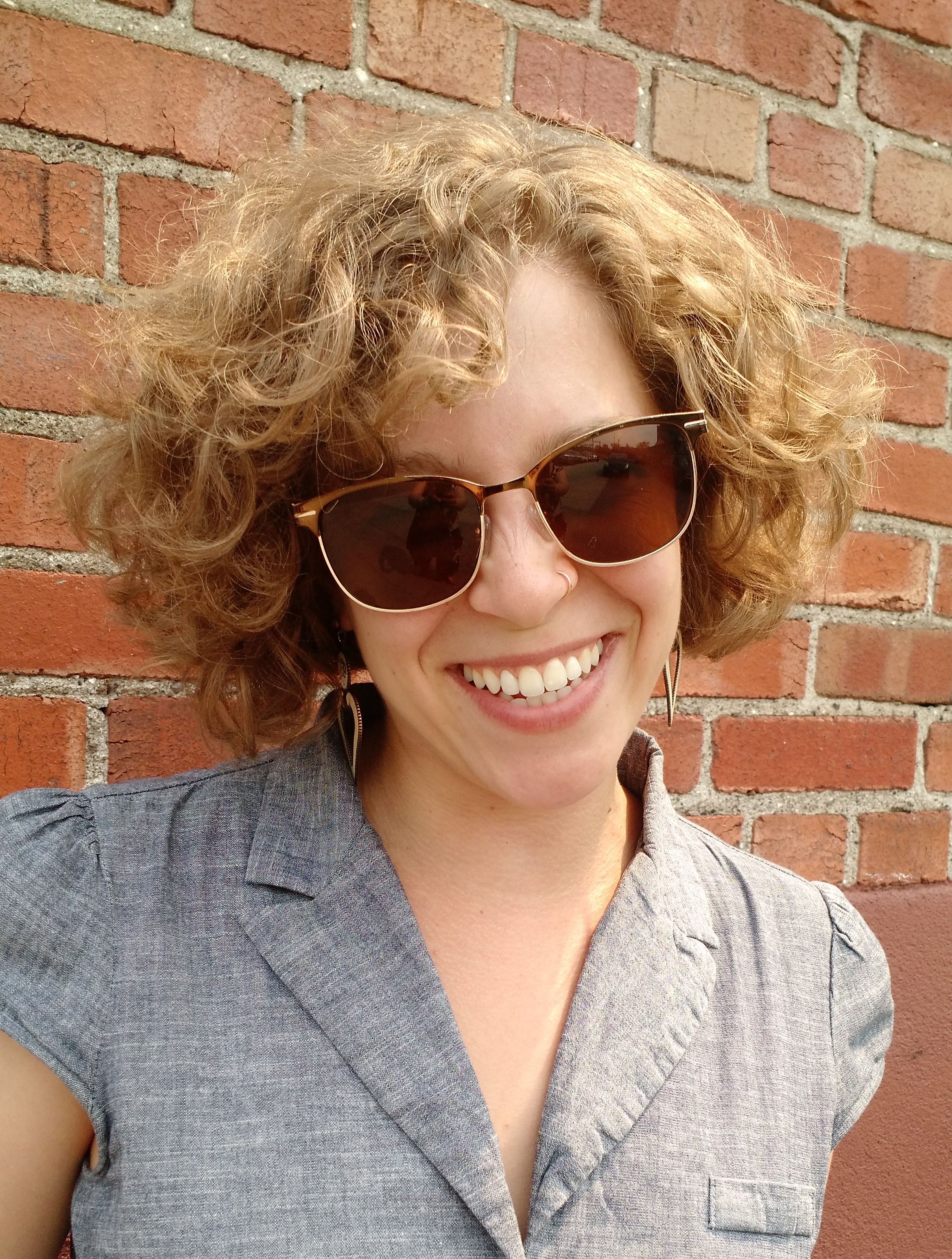
White supremacist Richard Spencer is a Whitefish resident.
Anne Helen Petersen has spent the last year covering Trump rallies and protests, the anti-Dakota Access Pipeline camp at Standing Rock, crowd-funded healthcare, survivalist “preppers” and what it means when famous men take off their shirts — just to name a few slices of her expansive range of subjects as a senior culture writer at Buzzfeed.
I can get people to talk to me because I can say, “I understand what it’s like to be misrepresented on the national level, and I want to get this story right.”
She treats every one of them seriously, dissecting moments and movements into layers of meaning, history and context. This search for understanding, Petersen says, is more useful than the ubiquitous calls for empathy that have sprung up in the wake of Donald Trump’s election. She’s looking for clarity, not compassion.
In January, as white nationalists threatened to descend on the idyllic ski town of Whitefish, Montana, Petersen made her way out west to see what was happening for herself. In a deeply researched piece about the march that didn’t happen, she untangles the threads of what did play out in Whitefish — and how recent decades set the stage for it.
Her piece takes an unflinching look at the contradictions in Whitefish and in the West: the white supremacist publication the Daily Stormer and the local group Love Lives Here, and how the region gave rise and responded to both. She focused on this town of fewer than 7,000 people — but makes clear that the currents that collided in January are not unique to Whitefish.
Petersen and I spoke by Skype about her reporting process and philosophy, what a journalist’s responsibility is, and whether it’s possible to write about the rural West while living in an East Coast city. A condensed and edited transcript of our conversation follows.
This piece offered a lot of context and voices on the ground, but it reads as pretty personal, too. How did you decide to work on this story?
I have been thinking about neo-Nazis in the Pacific Northwest for decades. Growing up in northern Idaho, the neo-Nazis and the Aryan Nation specifically were always something that was in my backyard — not literally, but within an hour. I was always frustrated, because in the Northwest, if you say “northern Idaho,” a lot of people still say, “Oh, neo-Nazis.” I didn’t realize that people outside of the Pacific Northwest didn’t have that sort of conflation! I was mad too — Hayden Lake, where they were in northern Idaho, is one of the most beautiful places in the Pacific Northwest, and they’d laid claim to this most exquisite place.
I think our responsibility as reporters is to continue to report on this stuff, but to also point out to readers the ways in which this speech is dangerous, this speech threatens the fundamentals of our democracy, but that at the same time, the freedom to make that speech is fundamental to our democracy.
When I saw that this was happening in Whitefish, a place where I had gone skiing many times growing up, I thought — there’s a long history of this, but at the same time, how do you stand up against this sort of bigotry and denounce it while a lot of people who live in the surrounding area also voted for Trump and can also can be discriminatory or racist in their dealings with Native Americans in particular?
I knew that I was uniquely equipped in some ways to do a national story on Whitefish. There has been a lot of really good reporting in the area, but of the reporting I’ve seen from The New York Times and other outlets, none of it was very knowledgeable of the context of the long history of hate groups in the Pacific Northwest and how Whitefish itself is this little liberal enclave in a county that does not necessarily believe the same things. I knew that I could — I call it sometimes playing my Idaho card. I can get people to talk to me because I can say, “I understand what it’s like to be misrepresented on the national level, and I want to get this story right.”
I did a lot of covering Trump rallies and that sort of thing, and I also recognize that my position as a white straight woman affords me a feeling of safety that a lot of my colleagues didn’t necessarily have. And so I felt like it was important for me, or someone like me, who could go to a Trump rally and not feel unsafe, to do that work.
You live in New York, where Buzzfeed is based. How much does your experience in and knowledge of the West come up in your reporting, especially in places that have recently been recognized as overlooked?
A lot it is just being familiar with and knowing how to talk to and not being personally offended by people believing something different than you do. I grew up surrounded by Republicans. I think there is sometimes a knee-jerk reaction of, “Oh God, I couldn’t go to a Trump rally, those people are crazy!” But for me, it was just like going to church. It was like going to hang out with the parents of the people I went to high school with. I know these people. I know how to talk to them, I know how to get them to talk to me, and I think there’s a posture that you can take that isn’t like, you’re a weird exotic animal — it’s just “you’re a person.”
There is a way that Montana lives in the popular imaginary. There is a way that West Virginia lives in the popular imaginary. So how as reporters can we add nuance to that understanding? That takes in-depth, lengthy reporting. That’s not just parachute reporting. That’s not just talking to a couple people on the phone. It’s being there. It’s also, I think, hiring people in your newsroom who can navigate those spaces. That’s part of the conversation moving forward: a lot of places have shut down their regional bureaus, so different leading publications are thinking of how to reinvigorate this close, rigorous, nuanced reporting in different areas. Can I be the rural Western reporter and still live in New York? Is that possible? That’s kind of my role right now. And even if I don’t live in New York — can I do it from Seattle? Is that still not actually doing it? But at the same time, what is lost when you’re not in the newsroom every day? There’s a real vitality to being in a national newsroom. The conversations that go on — what is lost when you move away from that too?

Rabbi Berry Nash, right, and Montana Rep. Dave Fern, R-Whitefish, after thanking politicians for defending the Jewish community in Whitefish when it was threatened and harassed by white supremacists.
I’m curious about what kind of reporting you did from a distance before you got to Montana.
I read a lot on Southern Poverty Law Center’s homepage. They are such an amazing resource in terms of really detailed histories of various hate groups. They have collected passages from different sermons from these pastors. They monitor chatrooms to see the different topics of conversation. It’s a very reliably and accurately sourced compilation of why these groups are considered hate groups, or dangerous groups — they have different designations. I did a lot of reading on the history of different hate groups in the Pacific Northwest. There are a couple of different articles that are really smart about the reasons why both neo-Nazism and what’s called the liberty groups, which are more about back to the land, return-to-arms militarism, converged in the Northwest.
And then just trying to untangle the series of events that happened leading up to the threat from the Daily Stormer. That meant not just, ugh, reading the Daily Stormer, going through all the comments on that site, which is just a cesspool, but also reading all of these local articles. There really was this pretty tangled web.
There are a lot of big questions right now about freedom of speech for journalists and also the “alt-right.” What do you think is important, what do you think is threatened, and how does that all of that relate to people not believing anything anymore?
It’s hard. I was reading about everything that happened at Middlebury [where student protesters disrupted a speech by conservative writer Charles Murray] and what happened at Berkeley [where protesters led the school to cancel a speech by former Breitbart editor Milo Yiannopoulos], and I think there is a really fine line. I think the Daily Stormer should have been allowed to march — that is their freedom of assembly. There were undue restrictions. I don’t think that was happening with Milo at Berkeley, where his planned speech was going to cause harm. He was going to name names of people at Berkeley who could be deported under Trump; that’s not freedom of speech, that’s actually targeted hate speech. I think our responsibility as reporters is to continue to report on this stuff, but to also point out to readers the ways in which this speech is dangerous, this speech threatens the fundamentals of our democracy, but that at the same time, the freedom to make that speech is fundamental to our democracy.
What about the question of bias in journalism? Where’s the line between pointing out why a travel ban is illegal, for example, and losing an audience that way, losing readers you could otherwise educate or inform?
That’s really hard, and it’s especially hard when our president has said that entire swaths of media are fake news based on just the name of the publication — including Buzzfeed. I think that part of this discussion is not so much about ideological perspectives but regional perspectives and identity perspectives. Empathy has been thrown around way too much. It’s not that you’re trying to gain empathy for a person so much as tell their story in a way that feels real and legitimate and that will allow people to see them as people.
Should I have tried harder to talk with the various hate groups that were in Whitefish? Or is it more interesting to tell the story of the town that’s trying to resist these hate groups?
My inclination is to talk about the larger macro issues through looking at the stories of these individuals, but doing it not just as parachute journalism. Actually investing in trying to paint a realistic portrait of a community and the ideological viewpoints that exist in that community — that seems really important to me, and that seems like a way you cannot alienate potential swaths of your audience. But that’s the difficult work.


